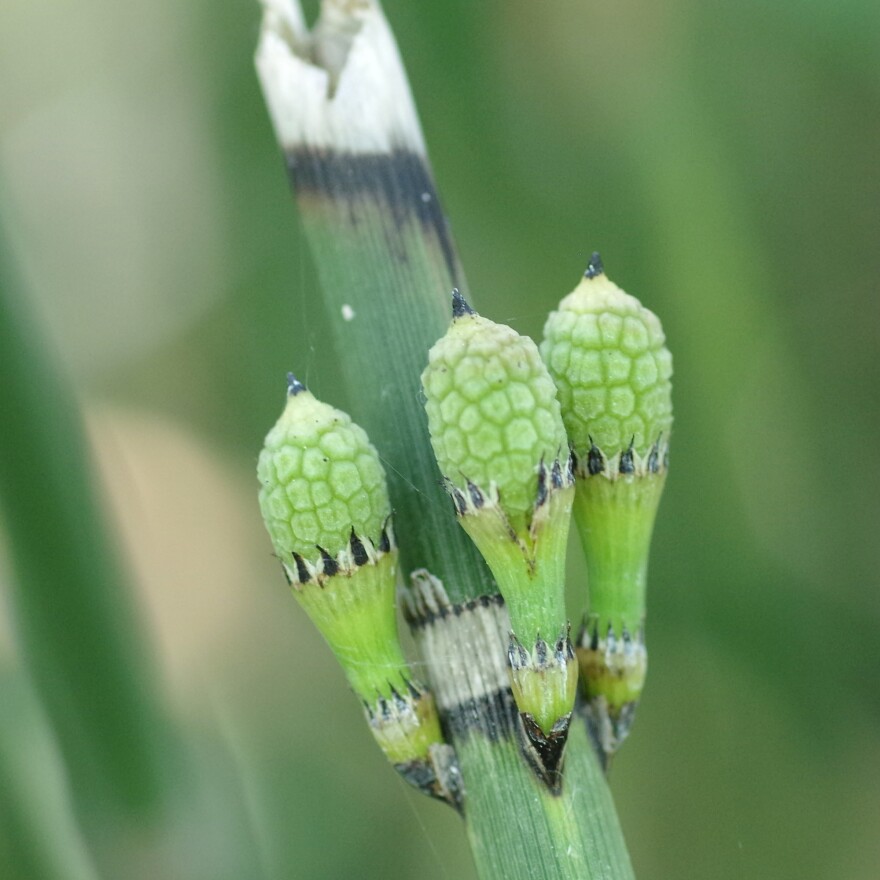Kate Redmond has been given the title of “anchor docent” for the Treasures of Oz. That means she’s willing and able to guide people through a featured preserve.
Treasures of Oz is an annual volunteer-driven event designed to induce people to explore some of the county's protected parcels. Saturday June 14, 2014 marks its 5th annual event.
Redmond is covering the 40-acre Cedarburg Environmental Study Area.
“People who owned it are the ones who built the ponds and the wetlands and they also planted the conifers that we walked through," Redmond says. "It makes a whole habitat that is different that what you get in other parts of the preserve. I can’t imagine how many owls are back there."
She spots a pair of dragonflies mating on a twig.
“And if you don’t mind terribly, I’m just going to tippy toe up on them and try to get their pictures,” Redmond says.
These dragonflies, called green darners, seem to top Redmond’s passion list.
“We have two populations in Wisconsin. We have a population that migrates back now and they will mate and lay their eggs in water and their young grow up in water," she says. "And about the time that these guys are pooping out, because they’ve come all the way from the south, and their young are hatching out, we have a resident population of green darners and they will be emerging."

This spot is also crawling with ant mounds. Mountains seem a more appropriate choice, based upon the massive structure we stumble into - it spans six feet.
“This place is known for the ant mounds but apparently nobody has ever done a scientific study and I’m not sure anybody knows exactly what species of ants we have here," Redmond says. "But the mechanics of ant mounds like this that they have quite a honeycomb of..living area underneath the mound and some of what is on top of the mound is brought up from underneath so they can have their egg chambers under there. But it’s a dynamite system because it’s solar heated."
Redmond grew up steeped in nature – largely, she says, influenced by hrt mom, who hunted and fished as a child and was hunting moose in Canada by the time she was 12. Redmond earned her master's degree at Cornell.
“It was called Nature Study and Conservation Education, which I think is a nice mouthful and means more to me than being called an ‘environmental educator’ which is very broad and includes things like smokestack emission,” she says.
Redmond boils down her philosophy to: “you have to introduce a kid to a salamander in order for the kid to conserve it.”
Redmond work in Philadelphia and New York state before settling back with her husband in her native southeastern Wisconsin.
Riveredge Nature Center in Newburg is one of the places she has “done odd jobs.” It was there Redmond earned the title “Bug Lady.”
“A number of years ago Riveredge hired a director who for the first time was not a naturalist; they needed a financial person," she says. "So I decided I was going to undertake his insect education, one insect at a time. I started sending him these short and pithy descriptions of insects. Then people heard about it and they wanted to get on this list."

She just finished her 326th bug entry – the fishfly.
Redmond describes her style as a third-person, “Miss Manners” sort of thing.
“But I’ve always believed when I was out in the field teaching, if you say something in a sort of memorable way, people will remember it,” Redmond says.
It may be hard to believe, but Redmond says beneath her passion and accumulated knowledge, deep down she’s a shy person; just ask her college speech teacher.
She learned to push through that barrier.
Kate Redmond conveys the importance of the delicate balance of nature - she feels down to her bones - through ant mounds and dragonflies in places like the Cedarburg Environmental Study Area.







